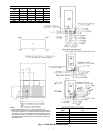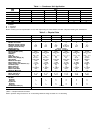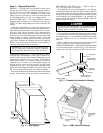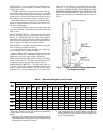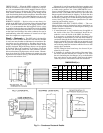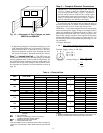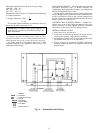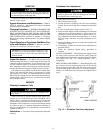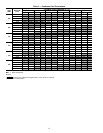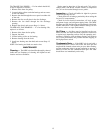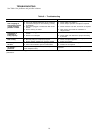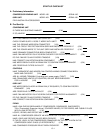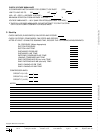
TROUBLESHOOTING
See Table 6 for problems and possible solutions.
Table6—Troubleshooting
PROBLEM POTENTIAL CAUSE SOLUTION
Unit is tripping on
high-pressure switch
or high discharge
pressure is noted.
1. Fan belts are slipping or broken.
2. Fan is not delivering adequate air for condenser.
3. Low-ambient damper is not functioning correctly
(if equipped).
4. Dirty coil or plugged or restricted air filter and/or
louvers.
5. Service valve(s) is closed.
1. Check and replace belts as necessary.
2. Check airflow (see Table 2)*.
3. Check damper operation and adjust as required.
4. Check and clean coil, filter, and louver as required.
5. Open valve(s) and check for restrictions in
refrigerant lines.
Compressor or
evaporator is
losing capacity.
1. Dirty coil or plugged or restricted air filter and/or
louvers.
2. Airflow is not adequate.
1. Check and clean coil, filter, and louver as required.
2. Check airflow and determine if proper subcooling
is provided.
Unit is noisy.
1. Airflow is turned too high.
2. Belt and pulley are not properly aligned.
3. Proper vibration isolation has not been applied.
1. Slow down motor and check discharge pressure.
2. Check and adjust alignment.
3. Isolate unit properly.
Water drips from
the unit.
1. Rain water drain not functioning properly.
2. Unit is not insulated to prevent condensation.
1. Clean drain and check drain operation.
2. Insulate unit as required.
Fan motor trips
on internal
protection.
Airflow is set too high for motor (motor amps ex-
ceed nameplate value).
Slow motor down and check discharge
pressure.
*Airflow should be within the range shown in Table 2, and should also be as close as possible to nominal airflow shown in Table 2 for optimum
performance.
16



